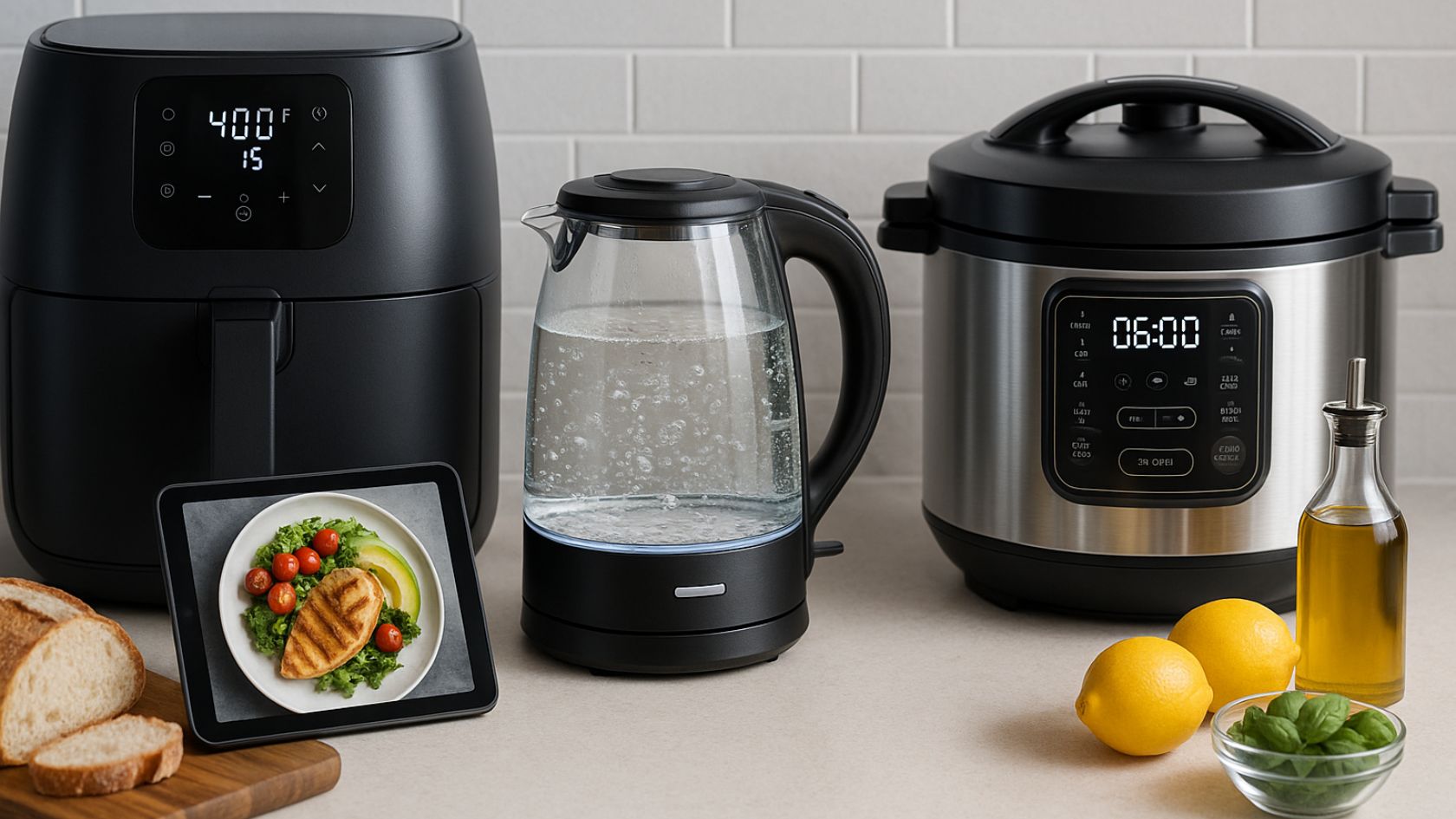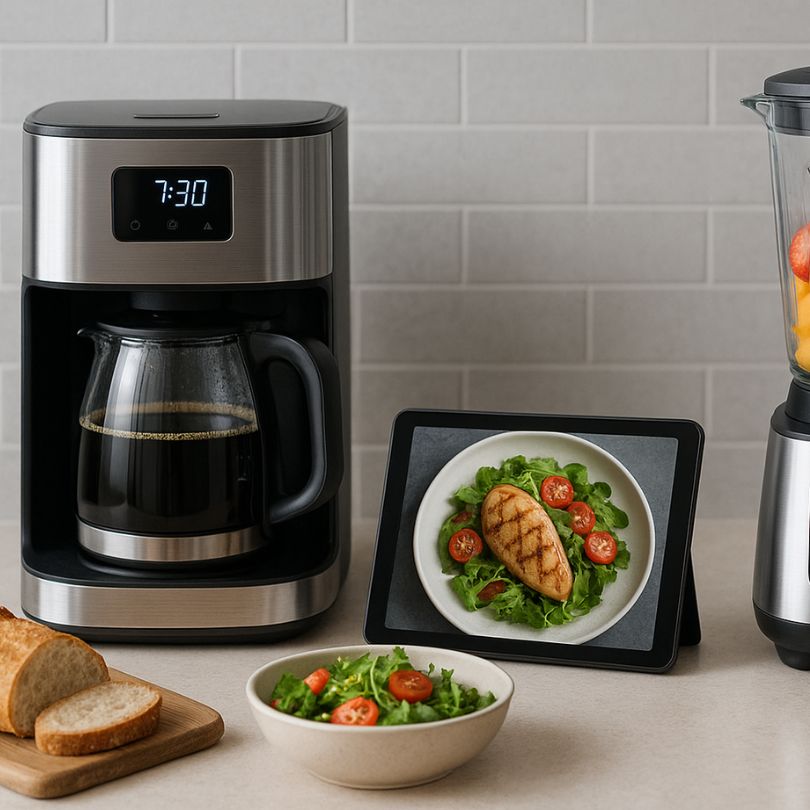
The Ultimate Guide to High-Converting Kitchen Products in 2025

High-converting kitchen products can turn a casual browser into a satisfied buyer faster than almost any other retail category, thanks to clear, relatable use cases—cook better meals, save time, reduce mess, and enjoy consistent results.
For marketers, creators, and store owners, the question is not simply which gadgets are trendy, but which items consistently earn clicks, add-to-carts, and verified purchases. The difference often comes down to perceived utility, social proof, and how easily a shopper can visualize the product improving their weeknight routine. If you need a starting point for must-have basics, this kitchen essentials list is a helpful benchmark for coverage and messaging.
In this guide, we’ll unpack what actually drives conversions in the kitchen niche, share specific product categories that repeatedly outperform, and outline page-level optimizations you can deploy today. Whether you sell via an online store, marketplaces, or affiliate content, you’ll walk away with a clear checklist for selecting and positioning proven winners.
We’ll also touch on the acquisition side: how content formats, user-generated video, and credible endorsements elevate intent. If you’re exploring creator-led growth, this primer on building influencer partnerships can help you craft offers and talking points that convert without feeling forced.
What makes a kitchen product “high-converting”?
While every audience is unique, the highest-converting kitchen items share a predictable set of traits:
- Immediate, visible outcome: Crispier fries, faster soups, smoother smoothies, or barista-level crema—clear promises sell.
- Time savings: Anything that trims prep or cleanup (think dishwasher-safe parts, one-pot meals) improves add-to-cart rate.
- Reliability and repeatability: Precision tools (thermometers, scales, grinders) reduce guesswork and returns.
- Ease of onboarding: Simple controls, recipes, and quick-start guides lower the perceived learning curve.
- Social proof: Ratings, UGC videos, and side-by-side comparisons resolve last-mile objections.
- Price psychology: Tiered bundles with a clear “hero” option and a premium anchor lift AOV without hurting conversion.
Category winners that reliably convert
1) Air fryers and multi-cookers
These remain top-of-funnel magnets because they promise healthier, faster meals with minimal cleanup. Conversion spikes when you present side-by-side outcomes (e.g., frozen fries: oven vs. air fryer in 10 minutes) and include a 3–5 recipe sampler in the gallery.
- Show interior capacity vs. serving size (2 qt = 1–2 people, 5 qt = 3–4 people).
- Highlight dishwasher-safe baskets and nonstick coatings to address cleanup fears.
- Add a 15–30 second lifestyle clip featuring sound and steam—sensory cues drive action.
2) High-speed blenders and personal blenders
Blenders convert when the value proposition is framed around outcomes: smoothie texture, nut butter capability, hot soup friction heating, and noise control. Clear charts that map watts → use cases help shoppers self-select quickly.
- Offer a small recipe pack and a cleaning demo; odors and stuck-on residues are common friction points.
- Address longevity: blade assembly materials, warranty terms, and replacement parts availability.
3) Precision tools: instant-read thermometers and digital scales
Nothing reduces buyer regret like precision. Instant-read thermometers eliminate dry chicken and underdone roasts; scales perfect baking and coffee ratios. These tools convert because they remove uncertainty and deliver consistent wins.
- Lead with accuracy (±0.5 °F) and speed to reading (2–3 seconds) in the first two bullets.
- Add a small temperature cheat sheet or brew ratio card as a downloadable bonus.
4) Knife sets, sharpeners, and cutting boards
Knives are tactile and aspirational. To convert, focus on steel type, balance, and maintenance. Pairing a mid-range chef’s knife with an easy pull-through sharpener and a juice-groove board creates a beginner-friendly bundle that outperforms single SKUs.
- Show a 10–15 second clip of tomato slicing and herb chiffonade—texture cues sell sharpness.
- Address safety, storage (sheaths, blocks), and care (handwash, oiling) to reduce returns.
5) Coffee gear: grinders, pour-over kits, and espresso accessories
Coffee buyers are passionate, and passion converts. Entry-level burr grinders and pour-over starter kits perform well when paired with simple brew guides and grind-size visuals. Emphasize repeatability and upgrade paths.
- Map grind steps to brew methods (espresso, Moka, Aeropress, pour-over, French press).
- Show a flavor improvement arc: pre-ground → blade grinder → burr grinder.
6) Food storage and meal-prep systems
Prep bowls, glass container sets, vacuum sealers, and silicone bags convert by promising fresher ingredients, reduced waste, and organized fridges. Clear stackability images and stain-resistance claims help shoppers visualize daily use.
- Call out BPA-free materials, microwave/oven limits, and lid interchangeability.
- Include portion guides for common diets (e.g., 400–600 ml for lunch bowls).
7) Cleanup helpers and silicone tools
Silicone baking mats, splatter guards, and pan scrapers turn cleanup from a chore into a quick rinse. These are low-ticket, high-satisfaction adds that raise average order value without scaring buyers away.
- Bundle 2–3 items that address the same pain (e.g., sheet pan set + mat + scraper).
- Show before/after images of stuck-on caramel vs. easy release.
Product-page elements that lift conversion
Above the fold
- Lead with the core outcome: “Crispy, evenly browned fries in 10 minutes, with 50% less oil.”
- Add a short comparison graphic: your product vs. common alternative.
- Place key specs as icons (capacity, power, warranty) for fast scanning.
Mid-page persuasion
- Include a 30–60s lifestyle video with real sound—hearing the sizzle matters.
- Surface top 3 customer quotes that address common objections.
- Show care/cleaning in one image or GIF to reduce perceived effort.
Decision support
- Comparison table across your sizes/models to guide self-selection.
- Delivery/warranty info near the CTA; avoid hiding it in tabs.
- One-click bundles: “Starter,” “Family,” and “Pro,” with a highlighted best value.
Checkout helpers
- Express checkout options and clear returns policy (e.g., 30-day test drive).
- Cross-sell complements that reduce friction (liners, brushes, extra seals).
- Stock and shipping estimates to create honest urgency without pressure.
Pricing, bundles, and promotions
Kitchen is ideal for laddered pricing. Anchor with a premium bundle (highest margin), spotlight a balanced “hero” kit, and keep a lower entry option for hesitant buyers. Use thresholds (e.g., free shipping at $50) to nudge carts toward bundles. Seasonal content—like “Summer Grilling,” “Holiday Baking,” or “Back-to-School Meal Prep”—gives you recurring hooks that feel helpful rather than salesy.
Content, creators, and social proof
Recipe videos, quick “prep-to-plate” clips, and real-time tests outperform static shots. Encourage customers to post their first meal with a branded hashtag and reshare the best clips with permission. Partnering with creators who naturally cook within your product’s niche—family dinners, meal prep, barista hacks—beats broad celebrity endorsements every time.
Pro tip: Bundle information with inspiration. A short PDF with five starter recipes or temperature charts builds confidence and reduces returns.
Measurement: how to know what’s working
- Category-level CVR: Identify which product families outperform your store average.
- Hero image CTR: Test outcome-forward imagery vs. studio shots.
- UGC lift: Track conversion before/after adding customer videos.
- Bundle attach rate: Monitor how often carts include complementary tools.
- Return reasons: Use feedback loops to update copy and care guidance.
FAQs
Do expensive kitchen gadgets always convert better?
Not necessarily. In many stores, mid-priced items with clear outcomes beat premium luxury picks. What matters is the clarity of benefit, perceived quality, and how quickly a buyer can imagine using it weekly.
What content format drives the most conversions?
Short, authentic video demos that show hands, food texture, and cleanup typically outperform polished commercials. Pair them with a concise outcome-first headline and a comparison table.
How can I reduce returns for appliances?
Set expectations early: show size in context, list compatible accessories, and provide a two-minute cleaning demo. Include a quick-start recipe card that guarantees a day-one win.
How do I pick which products to feature in ads?
Start with proven winners: air fryers, instant-read thermometers, and entry-level burr grinders. Then expand into complementary bundles (liners, scrapers, boards) to lift AOV without adding risk.
Conclusion
High-converting kitchen products succeed because they promise clear outcomes, reduce friction, and build buyer confidence at every step—from discovery to the first meal. If you combine outcome-first positioning with authentic social proof, smart bundles, and clear after-purchase support, you’ll see conversion gains that compound. Ready to expand your catalog or assess opportunities? Explore dropship product intelligence tools to validate trends, creatives, and competitive saturation before you commit.